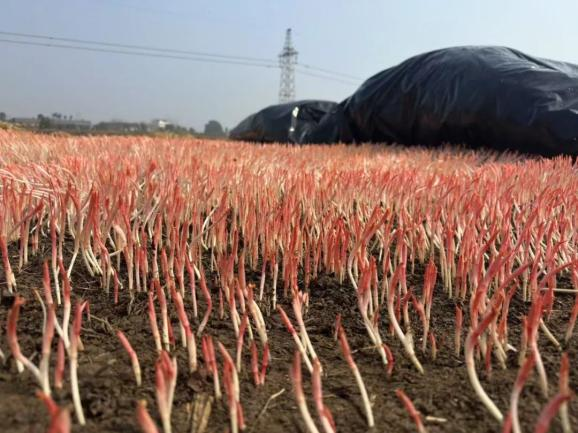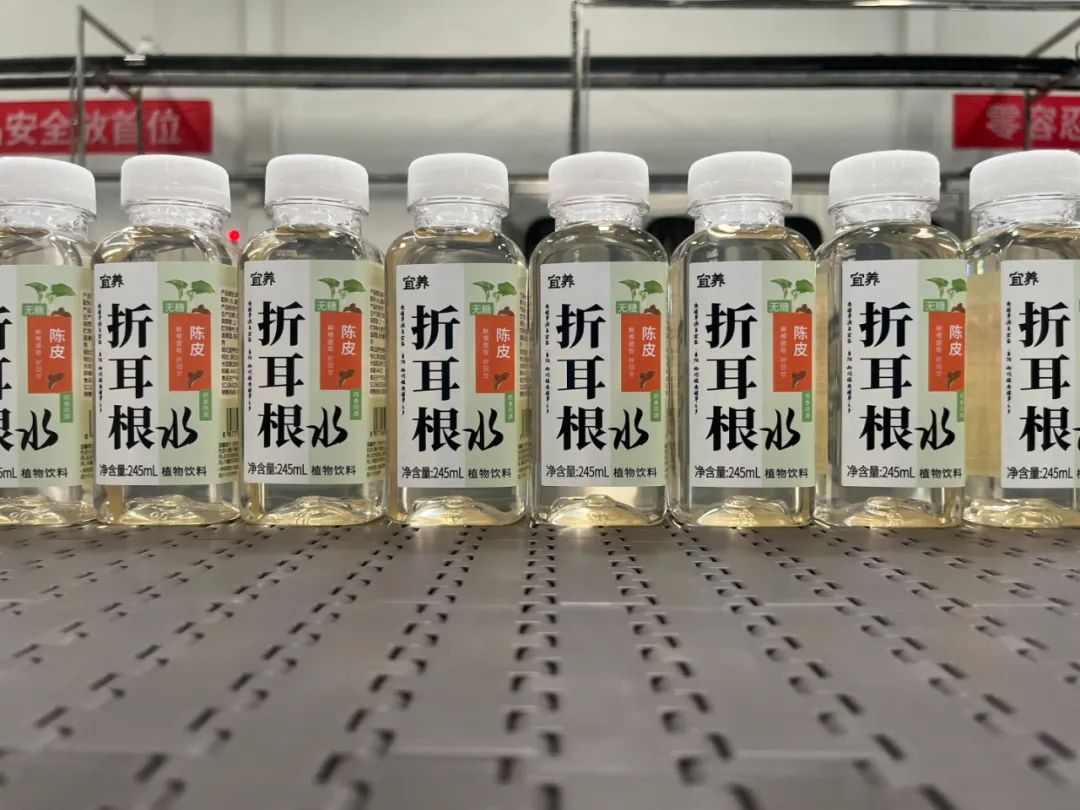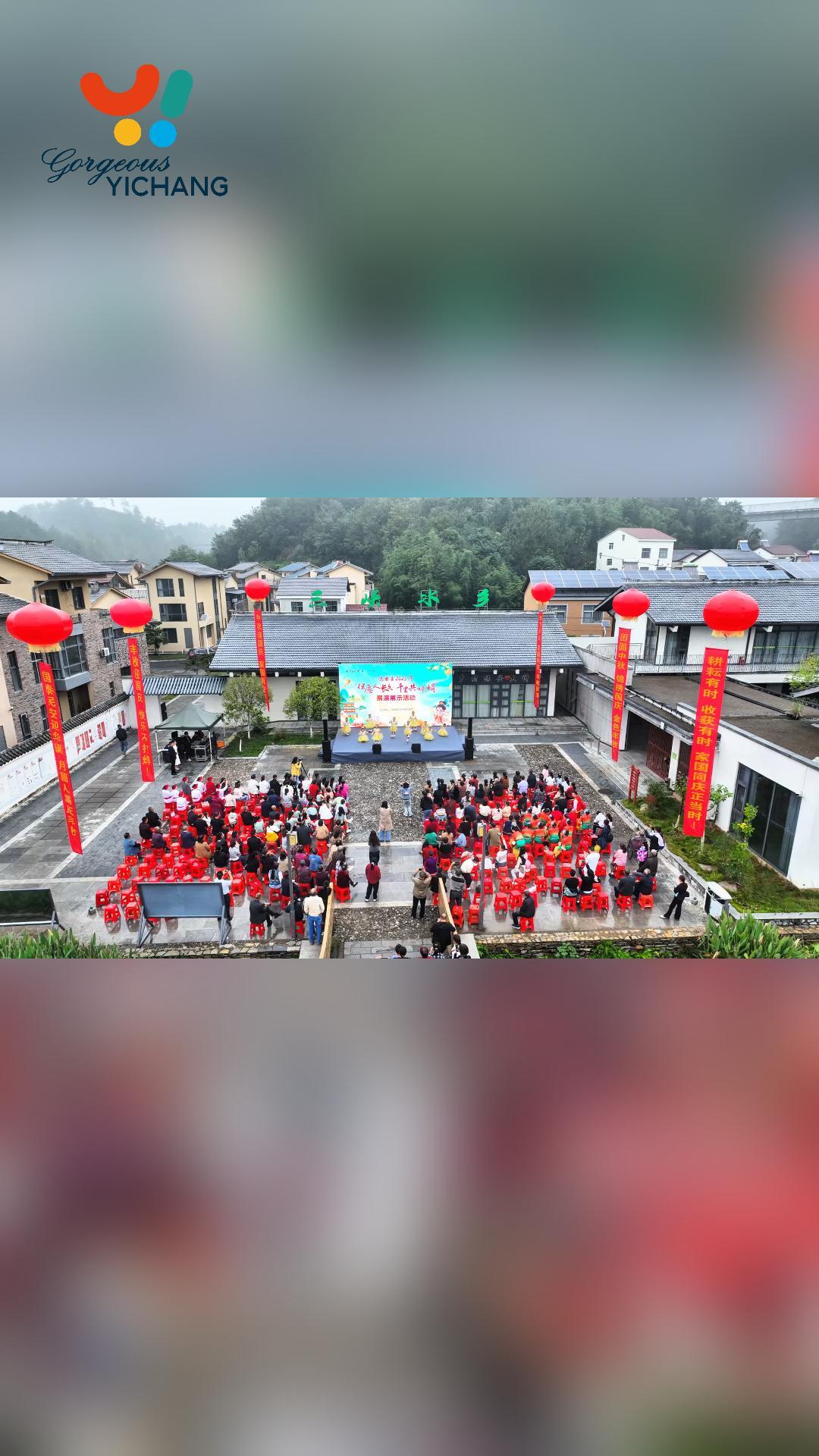Fish mint grows into a booming industry
2025-09-20 19:09:34
By Yan Wanqin
Dangyang, home to China's largest fish mint planting base, is expanding its facilities to strengthen this growing industry. A fish mint medicinal cuisine restaurant is set to open this month, followed by a dedicated trading center at the end of this year, marking the latest steps in turning the once-wild plant into an economic driver.
Fish mint is now processed into drinks, snacks, toothpaste and even skincare products, boosting local farmers' income.
This transformation stems from breakthroughs in cultivation techniques developed by the team led by Wu Fanghua, Director of the Agricultural Service Center in Lianghe Town of Dangyang City, which is part of Yichang. By carefully regulating temperature and light, farmers can now harvest both the shoots and roots from the same fields since late March each year, significantly increasing yields.
Zhao Guangming, a grower from Huchang Village in Lianghe Town, said: "During the Spring Festival, the seedling shoots can sell for 30 yuan (US$4.20) per kilogram. The income from one harvest is substantial, and when combined with root sales, it far exceeds what could be earned from cultivating the roots alone."

Dangyang, home to China's largest fish mint planting base, is expanding its facilities to strengthen this growing industry. A fish mint medicinal cuisine restaurant is set to open this month, followed by a dedicated trading center at the end of this year, marking the latest steps in turning the once-wild plant into an economic driver.
Fish mint is now processed into drinks, snacks, toothpaste and even skincare products, boosting local farmers' income.
This transformation stems from breakthroughs in cultivation techniques developed by the team led by Wu Fanghua, Director of the Agricultural Service Center in Lianghe Town of Dangyang City, which is part of Yichang. By carefully regulating temperature and light, farmers can now harvest both the shoots and roots from the same fields since late March each year, significantly increasing yields.
Zhao Guangming, a grower from Huchang Village in Lianghe Town, said: "During the Spring Festival, the seedling shoots can sell for 30 yuan (US$4.20) per kilogram. The income from one harvest is substantial, and when combined with root sales, it far exceeds what could be earned from cultivating the roots alone."

A new edible variety of fish mint.
The new varieties’ planting area continues to expand, with yields expected to surpass 150,000 kg by 2025. Dangyang now boasts the largest fish mint planting base in China with an annual output of 210,000 tons, generating more than 1.5 billion yuan in sales and accounting for 40 percent of the national wholesale market.
Local companies are innovating with new products. Yiyang Group runs a production line capable of making 40,000 cans of fish mint drinks per hour, with plans to distribute nationwide. "Our fish mint drink is additive-free. Combining the fresh aroma of orange peel with the nutritional benefits of fish mint. It has been very well received," said Gu Shuang, the company's deputy general manager.
 Yiyang Group’s new health-focused fish mint drink
Yiyang Group’s new health-focused fish mint drinkBeyond drinks, fish mint is being developed into toothpaste, facial masks, and skincare items. A freeze-dried production line, with an investment of 10 million yuan, will launch later this year. Eighteen technological breakthroughs have increased fish mints’ utilization rate to 98 percent, multiplying its added value 20 times.
In Lianghe Town, daily shipments of fish mint exceed 300 tons, reaching more than 20 provinces, including Beijing, Tianjin, and Shanghai, through integrated online and offline sales channels. E-commerce and improved logistics have further supported the expansion of its national market.
To highlight its unique value, Dangyang has also built a themed town and museum dedicated to fish mint. Visitors can learn its history, taste local dishes and participate in farm activities.
You Man contributed to this story.






